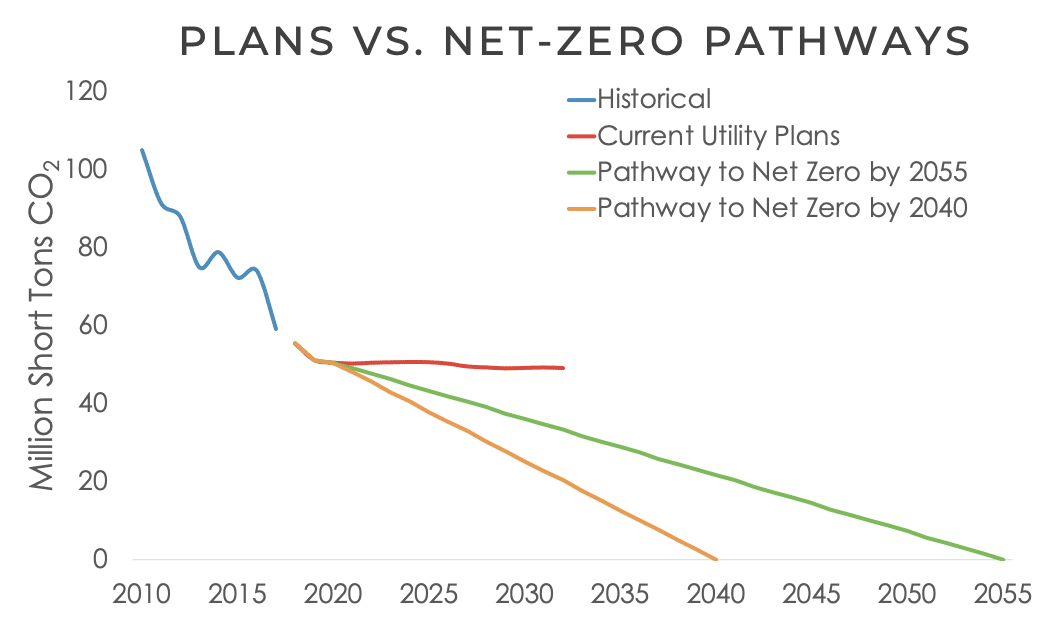Companies announcing plans to eliminate planet-warming greenhouse gas emissions have so far not managed to meet the most basic criteria for a robust net-zero goal, according to a of targets.
Only a third of the plans fulfill what Net Zero Tracker report authors consider the of reporting , which include making a pledge, explaining the steps, taking immediate action and reporting at least annually.
Most Corporate Net-Zero Targets Are Weak And Vague, Report Says
Pledges to eliminate emissions are widespread but not necessarily effective against climate change, according to the latest Net Zero Tracker report. . ."
ergy, Environment, Government, Urban
Interview: Why Our Cities Need To Have Their Own Net-Zero Plans
Supply-side perspectives dominate the net-zero conversation. But to get to net zero, we also need to shape the demand side. This is where cities can make a big difference.
Why are the efforts of cities important? What part do they play in emissions reductions?
Cities are where the majority of the population lives. Also, 90% of global GDP is generated in urban areas. All the essential infrastructure needed for a human settlement – energy, transport, water, shelter, food, construction materials, green and public spaces, waste management – come together in urban areas.
You can think about getting to net zero from a supply-side perspective – using renewable, or green, energy for power supply and transport – which is what I think dominates the conversation. But to get to net zero, you need to also shape the demand, or consumption, side: reduce the demand for energy. But we haven’t done enough research to understand what policies and urban designs help reduce demand in cities. Most national plans focus largely on the supply side.
![]()
You also need to devise ways to create carbon sinks: that is, remove carbon from the atmosphere to help offset the greenhouse gas emissions from burning fossil fuels.
These three – renewable energy supply, demand reduction through efficient urban design and lifestyle changes, and carbon sinks – are the broad strategies to get to net zero.
How can a city tackle demand?
Reducing demand for energy can be through efficiency – using less energy for the same services. This can be done through better land-use planning, and through behavior and lifestyle changes.
Transportation is a great example. So much energy is spent in moving people, and most of that personal mobility happens in cities. But better urban planning can reduce vehicle travel substantially. Mitigating sprawl is one of the biggest ways to reduce demand for travel and thus reduce travel emissions.
...Well-designed, dynamic ride sharing, like the Uber and Lyft pools in the US, can reduce total vehicle miles by 20% or 30%, but you need the right policies to prevent empty vehicles from driving around and waiting to pick up people, which can actually increase travel. These are big reductions on the demand side. And then you add public transit and walkable neighborhoods.
Electrification of transportation – the supply side – is important. But if you only think about vehicle electrification, you’re missing the opportunity of efficiency. . .
There’s a lot of emphasis on increasing efficiency of devices and systems to reduce these big sources of energy use, and thus emissions – heating, transport and cooking. But to get to net zero, you also have to change the way you provide heating, transport and cooking. And in most cities, heating and cooking involve the direct use of fossil fuels. . .Some cities in the US, like New York city and others in California, have adopted policies that restrict natural gas infrastructure for cooking in new public buildings and neighborhood developments, thereby promoting electric cooking. Electrifying cooking enables it to be carbon-emissions-free if the source of the electricity is net zero-emitting. . .
Many strategies require behavior change from citizens and public and private sectors – such as moving from gasoline-powered vehicles to lower-emission vehicles and public transport. How can cities encourage such behaviors?
Cities can offer free parking for electric vehicles. For venues that are very popular, they’ll offer electric vehicle charging, and parking right up front. But more than private vehicles, cities have leverage on public vehicles and taxi fleets.
Many cities are focusing on changing their buses to electric. . .That makes people aware, because the lack of noise and lack of pollution is very noticeable, and beneficial.
. . .Another incentive is subsidies: The US was offering tax credits for buying electric cars, for example, and some companies subsidise car-pooling, walking or transit. At Princeton, if I don’t drive to campus, I get some money back.
The main thing is to reduce private motorised mobility, get buses to be electric and nudge people into active mobility – walking, biking – or public transit. . ."
Source: https://science.thewire.in/environment/urban-emissions-electric-vehicles-net-zero/
HERE'S ONE EXAMPLE: While TVA has publicized an expected reduction in its emissions rate (but not total emissions) of 80% from 2005 levels, its analysis is limited to the 2030 to 2035 timeframe and does not constitute a formal goal or plan.
Tracking Decarbonization in the Southeast: TVA’s stalled decarbonization disadvantages the Tennessee Valley
//



No comments:
Post a Comment